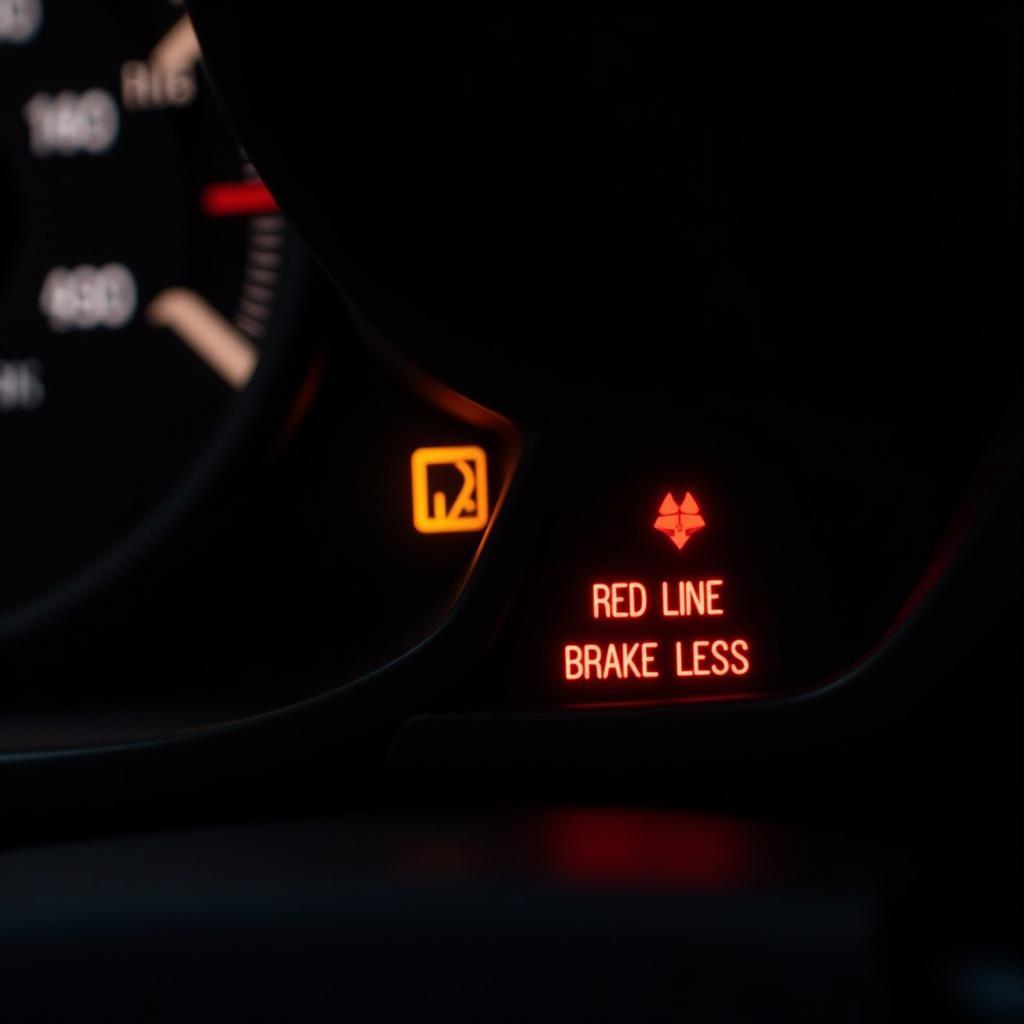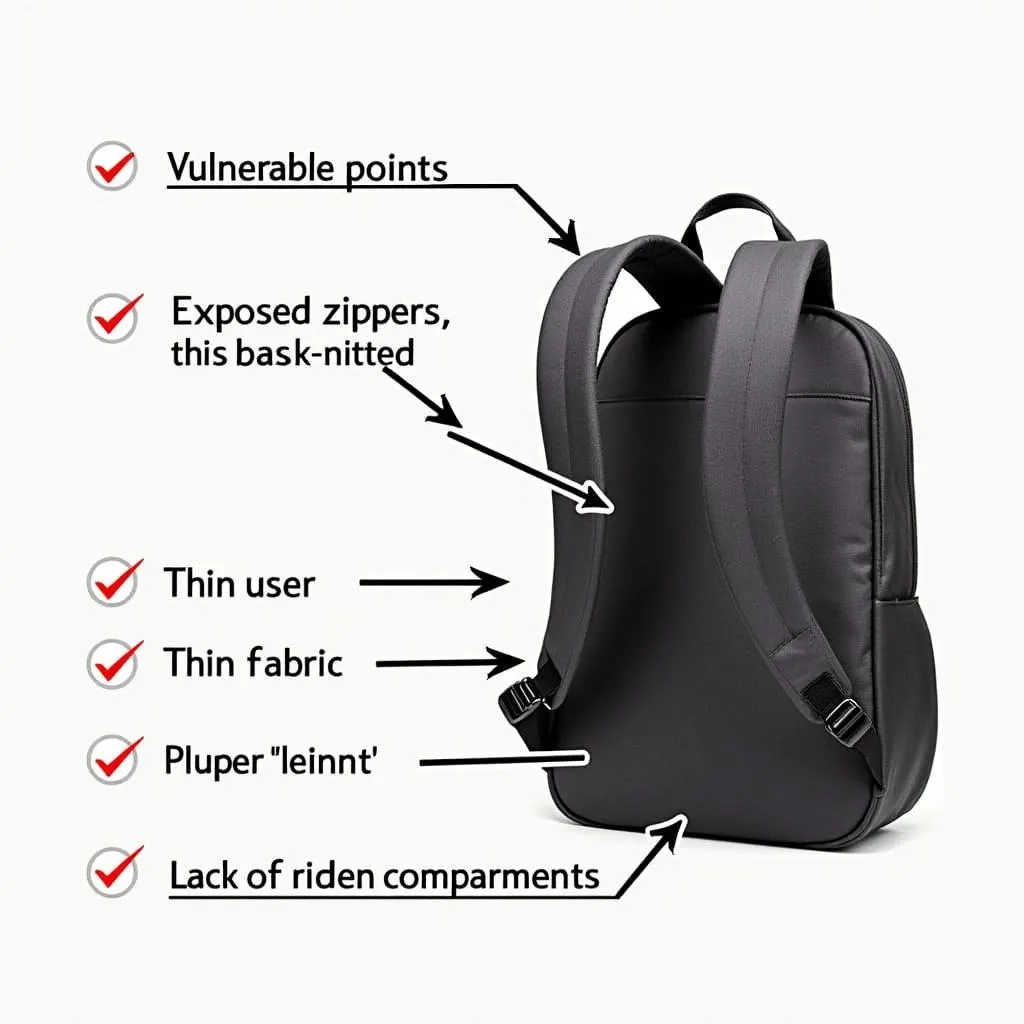The dreaded red line warning light on your dashboard, accompanied by the words “Brake Less”, is enough to make any driver’s heart skip a beat. This alarming message, thankfully rare, signals a critical issue with your vehicle’s braking system, rendering it potentially unsafe to drive. Understanding the potential causes of this warning and knowing how to proceed can save you from a dangerous situation and costly repairs.
Decoding the “Red Line Warning Brake Less” Message
While the exact wording might vary slightly depending on your vehicle’s make and model, the message essentially indicates that your car’s brake system is experiencing a complete or near-complete failure. This could be due to a variety of reasons, ranging from low brake fluid to a malfunctioning electronic brake control unit.
Common Causes of the “Red Line Warning Brake Less” Error
Before jumping to conclusions, it’s important to understand the potential culprits behind this critical warning message:
- Loss of Hydraulic Pressure: This is often the most common cause. A leak in your brake lines, a faulty master cylinder, or severely worn brake pads can lead to a loss of hydraulic pressure, making it impossible for the brakes to function correctly.
- Electronic Brake System Malfunction: Modern vehicles are equipped with complex electronic brake systems, such as Electronic Brake-force Distribution (EBD) and Electronic Stability Control (ESC). A failure in any of these systems, often signaled by an illuminated ABS or traction control light, can trigger the “Brake Less” warning.
- Faulty Brake Sensors: Sensors play a crucial role in monitoring your brake system’s health. A malfunctioning brake fluid level sensor, brake pad wear sensor, or wheel speed sensor can send erroneous signals to the car’s computer, resulting in the warning message appearing.
What to Do When You See “Red Line Warning Brake Less”
- Stay Calm and Pull Over Safely: The moment you see this warning, it’s crucial to remain calm. Avoid sudden braking or steering maneuvers. Safely guide your vehicle to the side of the road and come to a complete stop.
- Turn Off the Engine and Assess: Once safely parked, turn off the engine and engage your hazard lights. Avoid driving your vehicle any further until the issue is diagnosed and resolved.
- Check Brake Fluid Level: If possible and safe to do so, carefully check the brake fluid level in the master cylinder reservoir. Low brake fluid is a strong indicator of a leak and requires immediate attention.
- Contact a Professional: Do not attempt to diagnose or repair the issue yourself. Contact a qualified mechanic or your dealership’s service center immediately. Explain the warning message and any other symptoms you’ve noticed.
 Dashboard Warning Light Showing "Red Line Brake Less"
Dashboard Warning Light Showing "Red Line Brake Less"
Remote Diagnostics and Software Solutions
In today’s technologically advanced automotive landscape, remote diagnostics and software solutions are playing an increasingly crucial role in addressing vehicle issues, including brake system problems.
“Our team of expert technicians can often diagnose the root cause of the “Red Line Warning Brake Less” error remotely using advanced diagnostic tools.” – John Smith, Senior Automotive Diagnostic Technician at Car DiagTech.
Here’s how remote diagnostics and software solutions can be beneficial:
- Quick and Efficient Diagnosis: Specialized software can connect to your vehicle’s onboard computer remotely, retrieving diagnostic trouble codes (DTCs) that pinpoint the source of the issue.
- Targeted Repairs: By accurately identifying the problem area, unnecessary repairs and part replacements can be avoided, saving you time and money.
- Software Updates and Recalibrations: In some cases, the “Red Line Warning Brake Less” error might be triggered by a software glitch or the need for a system recalibration. Remote software updates and adjustments can effectively address these issues.
Preventing Future Brake System Issues
While some brake system failures are unavoidable, proactive maintenance can significantly reduce the risk:
- Regular Brake Inspections: Adhere to your vehicle manufacturer’s recommended brake inspection intervals. During these inspections, a mechanic will check the brake pads, rotors, calipers, brake lines, and fluid levels for wear and tear.
- Timely Brake Fluid Flushes: Brake fluid is hygroscopic, meaning it absorbs moisture over time. This can lead to corrosion and reduced braking performance.
- Quality Brake Pads and Rotors: Opt for high-quality brake pads and rotors from reputable brands to ensure optimal braking performance and longevity.
Conclusion
The “Red Line Warning Brake Less” message is a serious warning that should never be ignored. Understanding its potential causes, knowing how to react safely, and seeking professional help are crucial steps in ensuring your safety on the road. By staying proactive with brake system maintenance and utilizing the power of remote diagnostics and software solutions, you can keep your vehicle running smoothly and, most importantly, safely.
Frequently Asked Questions
1. Can I drive my car with the “Red Line Warning Brake Less” message on?
No, it is extremely dangerous to drive your vehicle with this warning displayed. It indicates a critical brake system failure.
2. How much does it cost to fix a “Red Line Warning Brake Less” issue?
The repair cost can vary widely depending on the underlying cause. It could range from a simple brake fluid top-up to a complex electronic brake system repair.
3. Is the “Red Line Warning Brake Less” message always related to a brake fluid leak?
While a brake fluid leak is a common cause, the warning can also be triggered by electronic brake system malfunctions or faulty sensors.
4. Can a software update fix the “Red Line Warning Brake Less” issue?
Yes, in some cases, a software update or recalibration might be necessary to address software glitches or communication errors within the brake system.
5. How often should I have my brakes checked?
Refer to your vehicle manufacturer’s recommended maintenance schedule for brake inspection intervals. However, it’s generally advisable to have your brakes inspected at least once a year or every 12,000 miles.

